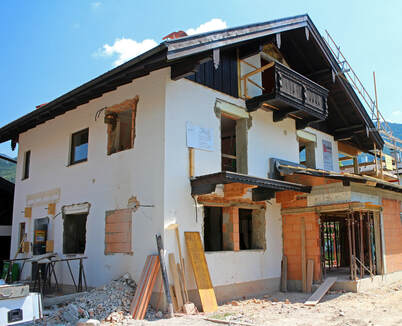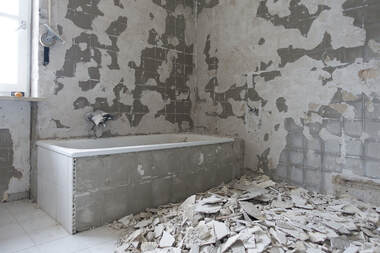|
I am sure you have all done a spot of painting in your home and then spent several hours afterwards cleaning up paint spills and splashes where paint should not have been. Those of you who are less handy may have attempted a small repair job, only to end with a bigger mess than there was before you started. Renovating portions of an existing house can result in damage to the rest of the house. This damage results in additional costs. Even supposed competent building contractors have been known to damage existing homes because a workman was careless or the work was left unsupervised. Unfortunately damage can often be easily caused. Some damage might not even be immediately visible and only discovered after the contractor has moved off site. How your home is damaged during renovation and building workTypical causes of damage and additional costs incurred during renovation and building work to your home includes.
Do not create extra work when renovating your homeTaking a few extra precautions will prevent many of the causes of damage. Important is to keep an eye on your contractor. Do not be afraid to remind them to be careful, and immediately point out things that concern you. Good communication with your building contractors is vital If your contractor knows that you are watching they will usually take a little extra care. How to Make Your Home Secure When Remodeling and Renovating your Home Repairing damage to areas which are not being renovated results in additional costs, it sometimes leaves a permanent scar which can't be repaired, it's annoying, and it can cause further inconvenience to you. Of course you also would not want a precious heirloom or most loved possession to be damaged by careless workers - something that is irreplaceable to you. Before starting your home building project check your insurance Want to learn more about designing, renovating and building houses?Paul Netscher has written 2 easy to read books 'An Introduction to Building and Renovating Houses - Volumes 1 and 2'. An Introduction to Building and Renovating Houses Volume 1 deals with Hiring Contractors, Managing Construction and Finishing Your Home. and Designing your ideal home Volume 2 deals with Finding Your Ideal Property and Designing Your Dream Home.
("Great for those that DIY. Very helpful in home renovations!" said a Reader on Amazon.com 5*****) These books are available from Amazon and other online bookstores in paper and ebook.
1 Comment
8/12/2020 10:23:42 am
I agree with you. This post is truly inspiring.
Reply
Leave a Reply. |
AuthorI’m a construction professional, author of several successful construction management books, and a home owner. I’ve made mistakes in construction management, I’ve seen others make mistakes, but importantly I’ve had multiple successful construction projects and I’ve learned from the mistakes. I want to share these lessons and my knowledge with you. Also available from:
Amazon Au, Amazon DE, Amazon ES, Amazon CA, Amazon IT, Amazon FR, Amazon NL, Amazon India and 'An Introduction to Building Houses - Volume 2 Finding Your Ideal Property and Designing Your Dream Home'
Archives
July 2024
CategoriesWe welcome genuine comments, especially comments that add additional information to the subject matter in the article. We however reserve the right to remove inappropriate comments, which includes comments that have nothing to do with the subject, comments that include inappropriate language, and comments that are an advertisement for a product or company, or which include an advertising link. Comments must be in English. We will not enter into discussion on why a particular comment was removed.
|






 RSS Feed
RSS Feed


